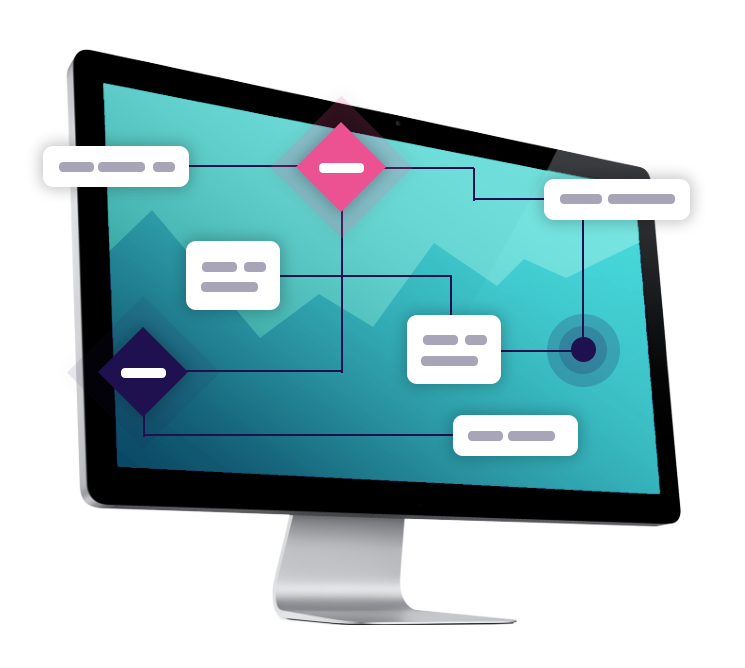Top trends every banker needs to know
As 2025 progresses, the banking space is showing significant signs of transformation. Thomas Michaud, CEO of Keefe, Bruyette & Woods (KBW), recently presented a compelling analysis during the ‘What Happened and What’s Next’ session at Bank Director’s Acquire or Be Acquired conference. His insights shed light on the major trends shaping the future of banking, from capital markets resurgence to strategic consolidations and evolving digital strategies.
Richard Heller, Senior Account Executive at GDS Link, attended Michaud’s talk and highlighted critical takeaways on four major trends every banking leader should be watching.
Capital Markets Are Reawakening
After years of stagnant capital activity, banks raised over $7 billion through senior debt and equity offerings in 2024—a pivotal shift driven by improving fundamentals. Reduced funding costs, paired with stabilizing interest rates, are creating opportunities for banks to finance strategic initiatives.
But this isn’t just about bulking up balance sheets. According to Heller, the real story lies in how banks are deploying this capital.
“We’re seeing banks prioritize innovation,” he explained. “Whether that’s investing in next-gen digital platforms or making data-driven lending strategies more agile, the goal is clear: stay competitive in an increasingly tech-driven world.”
This renewed investor confidence also opens doors for smaller regional players to seek growth funding, particularly through M&A deals that had been stalled due to market uncertainty.
Strategic Mergers and Acquisitions Accelerate
With 126 M&A deals announced last year, consolidation is heating up. Institutions are making large-scale moves, with transactions over $250 million now representing a growing share of activity. But this isn’t about survival—it’s about positioning.
“Banks are playing offense,” Heller said. “They’re targeting complementary business lines, technology assets, and regional dominance to build networks that are not only resilient but poised for long-term leadership.”
Take, for example, several high-profile mergers aimed at achieving vertical integration. These deals aren’t just about cost-cutting synergies but also about creating end-to-end financial ecosystems that can better serve evolving customer needs.
Digital Innovation Finds Its Stride
While fintech once posed a challenge to traditional banks, recent regulatory shifts have leveled the playing field, giving banks a chance to catch up. Michaud pointed to Apple’s decision to unlock its NFC chip for third-party apps as a pivotal moment, giving banks the opportunity to upgrade their digital wallet offerings and better compete.
“Banks are becoming more intentional about digital strategy,” noted Heller. “They’re not just patching tech gaps—they’re seeking scalable, secure solutions built to evolve with demand.”
Still, innovation doesn’t come without challenges. Banks face mounting cybersecurity risks, higher customer expectations, and the need to upskill teams to handle complex tech stacks. That’s where platforms like GDS Link’s decisioning engine come into play, offering a powerful advantage.
“Our platform integrates over 200 data sources with advanced AI models,” Heller explained. “It’s designed to help lenders make faster, more precise decisions. We’re not just talking speed here—it’s about giving them the confidence to manage risk, scale operations, and adapt to market shifts in real time.”
By integrating AI-powered insights into their workflows, banks and lenders are taking a critical step forward—one that balances agility, risk management, and customer needs in today’s fast-moving digital world.
The Path to Higher Earnings in Banking
After a challenging 2024, where nearly two-thirds of banks saw negative EPS growth, projections for 2026 look far more optimistic. Cost-cutting measures, operational efficiency improvements, and declining interest rates are all contributing to a brighter earnings forecast. The expected rate cuts in the latter half of 2024 and throughout 2025 will further lower funding costs, giving banks a much-needed profitability boost.
Heller emphasized that efficiency improvements aren’t just about trimming expenses.
“It’s about leveraging technology and analytics to make smarter decisions faster,” he said. “Banks finally have room to focus on strategic growth instead of being in constant firefighting mode.”
Looking ahead, the institutions that successfully integrate data-driven insights into their decision-making processes will likely outperform peers still reliant on legacy operations.
Seizing Opportunities in a Shifting Banking Industry
These emerging trends point to one overarching reality: agility is the currency of success in modern banking. Institutions that can quickly pivot, adopt new technologies, and manage risks in real-time will secure a competitive edge.
GDS Link stands at the forefront of enabling this agility. Our advanced AI decisioning platform helps banks harness automation, predictive analytics, and real-time data insights. We help institutions streamline credit decisions, enhance customer engagement, and unlock new growth opportunities.
Ready to position your bank for success in 2025 and beyond? Schedule a personalized meeting with Richard Heller to explore how GDS Link can support your strategic goals.









